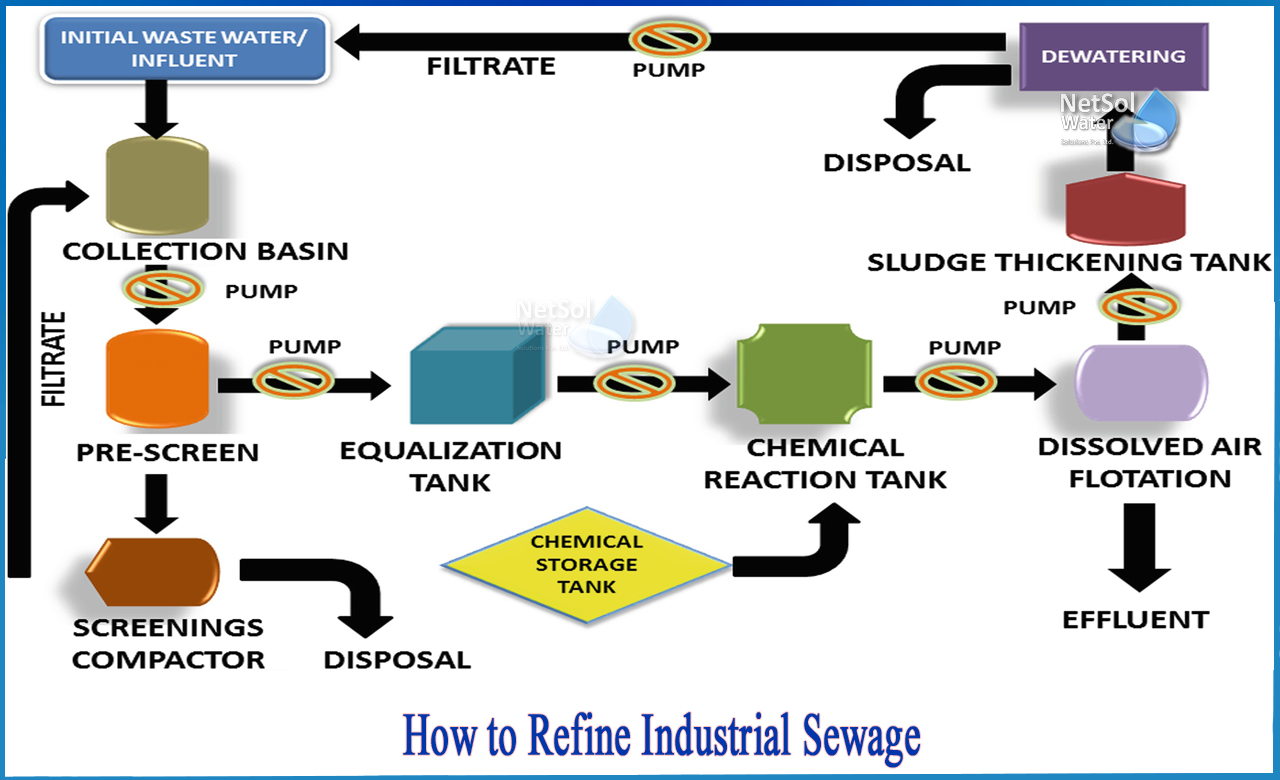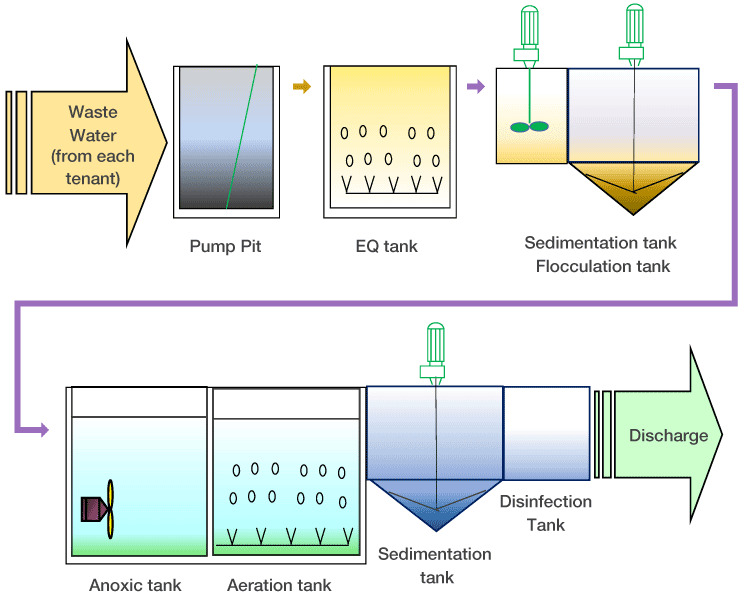Industrial Waste Water Treatment-- Enhance Effectiveness with Custom-made Water Treatment Equipments
Developments and Advancements in Industrial Waste Water Therapy Technologies
The landscape of commercial wastewater therapy is undertaking a transformative shift, driven by technologies that boost both effectiveness and sustainability. As governing standards progress, the integration of AI and maker learning right into wastewater monitoring systems guarantees to make certain and enhance operations compliance.
Summary of Waste Water Therapy Technologies
Wastewater therapy technologies encompass a variety of approaches developed to eliminate contaminants from commercial effluents before their release into the environment. These modern technologies are important for preserving eco-friendly equilibrium and making certain conformity with environmental regulations. The primary categories of wastewater treatment consist of physical, chemical, and organic approaches, each serving unique functions based on the nature of the impurities present.

Biological treatment methods use bacteria to weaken raw material, making them especially reliable for organic-rich effluents. Strategies like turned on sludge and biofilm activators harness the all-natural deterioration abilities of microorganisms, bring about considerable decreases in biochemical oxygen demand (FIGURE)
Advanced Filtering Strategies
Advanced filtering methods represent an essential development in the world of commercial wastewater therapy, enhancing the efficiency of pollutant removal processes. Industrial Waste Water Treatment. These approaches incorporate a variety of innovations, consisting of microfiltration, ultrafiltration, nanofiltration, and reverse osmosis, which provide sequential obstacles for various bit sizes and chemical frameworks
Microfiltration and ultrafiltration make use of membrane systems to eliminate put on hold solids, bacteria, and bigger organic molecules, improving the high quality of effluent previous to further therapy. Nanofiltration connects the void between ultrafiltration and reverse osmosis, effectively eliminating natural substances and divalent ions, hence decreasing the tons on downstream processes.
Reverse osmosis uses the highest degree of purification by allowing only water and tiny molecules to pass via its semi-permeable membranes, making it perfect for redeeming top quality water from commercial effluents. Recent advancements in membrane modern technology, consisting of the growth of more durable and fouling-resistant products, have dramatically boosted functional efficiency and minimized prices.
Incorporating these advanced filtration methods not just improves the general therapy procedure but also adds to sustainability initiatives by making it possible for water reuse and source recuperation in industrial settings. (Industrial Waste Water Treatment)
Organic Therapy Advancements

Additionally, the development of crafted biological systems, such as membrane layer bioreactors (MBRs), integrates organic treatment with advanced membrane layer filtration. This assimilation permits greater effluent high quality and reduced impact, making it suitable for space-constrained commercial facilities. Technologies in genetically engineered microbes have additionally emerged, boosting the biodegradation of specific impurities, such as drugs and heavy steels, that are commonly challenging to get rid of.
Additionally, the execution of bioaugmentation strategies, where valuable microorganisms are presented to enhance the existing biological therapy processes, has revealed promising outcomes in boosting treatment performance. These technologies collectively symbolize a fad towards more lasting and you could look here efficient organic treatment approaches that can adjust to the advancing complexities of industrial wastewater streams. As markets proceed to focus on environmental compliance, these biological technologies will certainly play a crucial duty in wastewater management.

Resource Recuperation Techniques
In commercial setups, see this website the integration of source recovery approaches has become significantly important for boosting sustainability and reducing waste. These methods concentrate on extracting useful materials and power from wastewater streams, thereby changing potential contaminants right into recyclable sources.
One popular strategy is nutrient recuperation, where nitrogen and phosphorus, frequently existing in excess in wastewater, are caught and transformed into plant foods. This not just decreases environmental effects yet also supplies a circular economic climate remedy for agricultural applications. Furthermore, modern technologies such as anaerobic digestion enable for the conversion of natural waste right into biogas, a renewable energy resource that can counter fossil fuel use in commercial procedures.
Furthermore, advanced filtering and membrane layer modern technologies facilitate the healing of commercial byproducts such as steels and salts. These recovered materials can be reintegrated into manufacturing procedures, lowering the need for virgin resources.
Future Trends in Waste Water Administration
As markets significantly focus on sustainability, the future of wastewater monitoring is readied to undertake significant transformations. Technological developments, such as expert system and artificial intelligence, will certainly allow a lot more reliable surveillance and administration of wastewater systems. These innovations can anticipate maintenance requirements, enhance treatment processes, and boost decision-making, inevitably lowering functional expenses and ecological effect.
Furthermore, the integration of circular economic situation concepts will play an important function in wastewater management. Industries are anticipated to change in the direction of systems that not only treat wastewater yet likewise recuperate valuable sources, such as nutrients, water, and power. This shift will decrease waste and advertise the reuse of materials, aligning with international sustainability goals.
Emerging therapy methods, such as membrane bioreactors and progressed oxidation processes, will better improve the effectiveness of wastewater therapy, permitting higher top quality effluents appropriate for reuse. Additionally, governing frameworks are most likely to develop, stressing stricter standards for wastewater discharge and motivating industries to take on ingenious therapy services.
Verdict
In verdict, the evolution of industrial wastewater treatment modern technologies shows a significant shift towards improved performance and sustainability (Industrial Waste Water Treatment). Technologies in advanced filtration methods, biological therapies, and source recuperation approaches highlight the sector's dedication to ecological stewardship.
The landscape of commercial wastewater treatment is undergoing a transformative shift, driven by innovations that enhance both efficiency and sustainability.Wastewater treatment innovations include a variety of techniques developed to eliminate pollutants from industrial effluents before their release into the setting.Harnessing the power of organic procedures has actually led to considerable advancements in find this the treatment of industrial wastewater.Additionally, the implementation of bioaugmentation strategies, where beneficial microbes are presented to improve the existing biological treatment procedures, has actually revealed appealing results in boosting therapy performance. These developments collectively indicate a fad in the direction of more effective and sustainable organic therapy approaches that can adapt to the advancing intricacies of industrial wastewater streams.